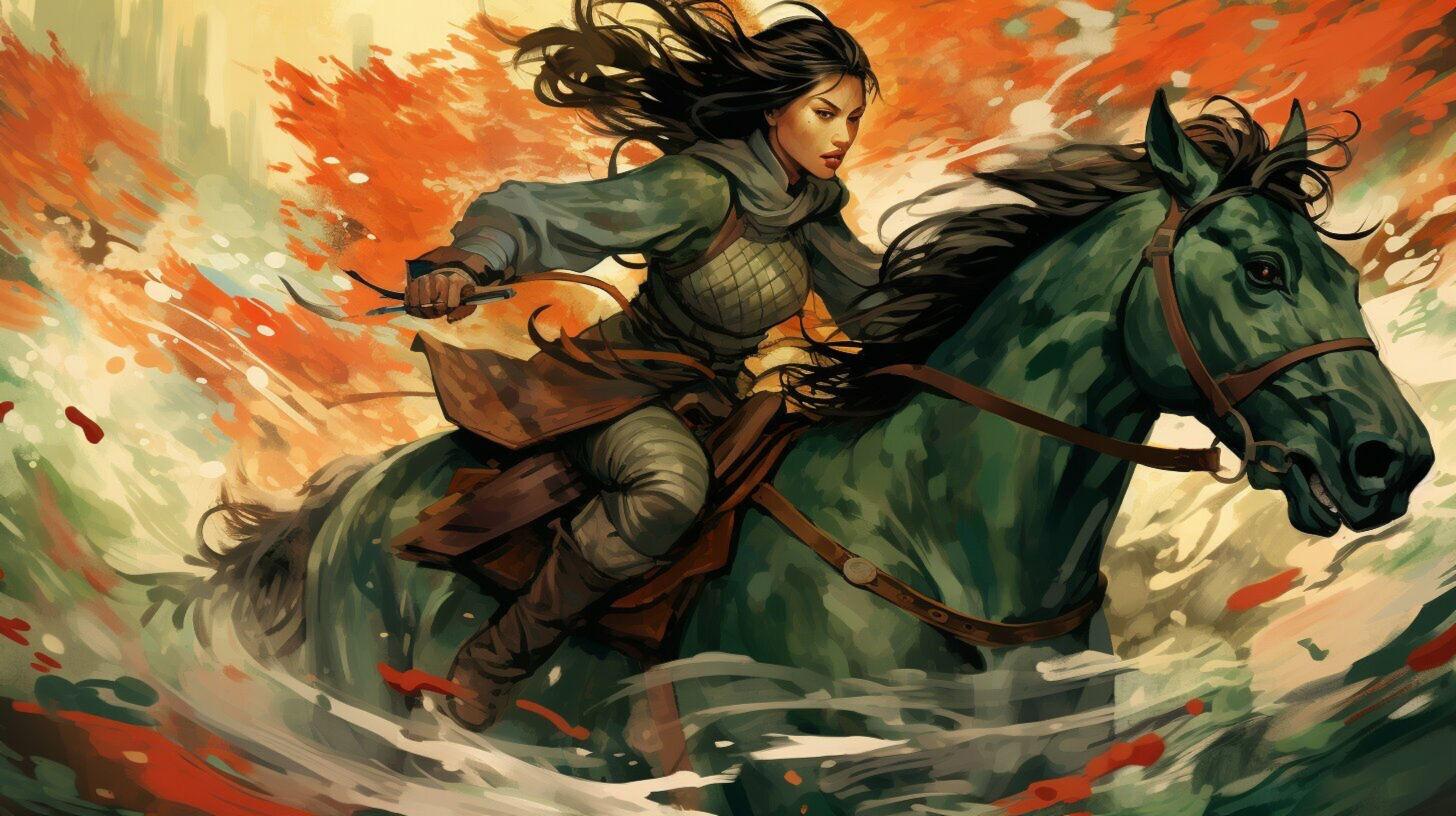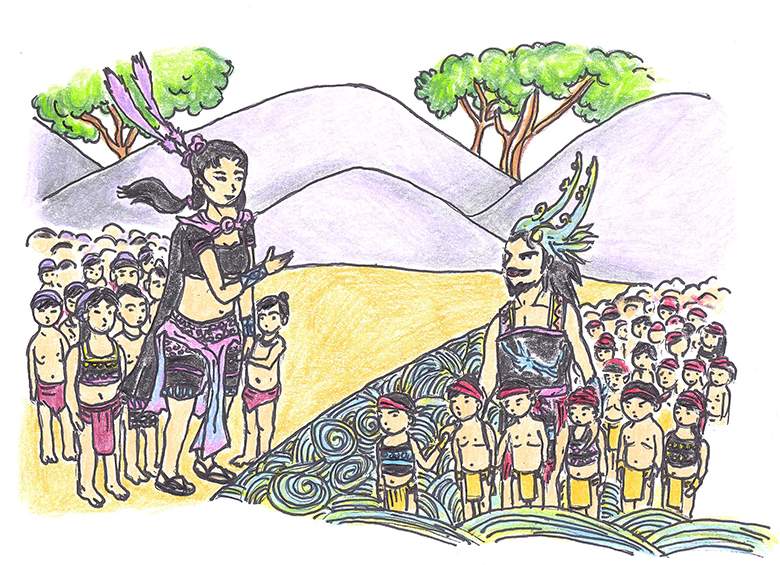The Legend of Trung Sisters: Vietnam’s Heroines
The Trung Sisters are celebrated as national heroines in Vietnam, their story deeply rooted in the country’s history and culture. Born in the first century AD, Trung Trac and Trung Nhi were sisters who rose to prominence as leaders of a rebellion against Chinese domination over Vietnam. The Trung Sisters’ bravery and military prowess made them an enduring symbol of Vietnamese nationalism and resistance against foreign rule. Their story has been passed down through generations, inspiring countless people – especially women – to stand up for their beliefs and fight for their freedom. Origins of the Legend The story of the Trung Sisters centres on a period of Chinese domination of Vietnam, spanning from 111 BC to 938 AD. According to legend, the Trung Sisters were born in the Nhat Thanh district of Giao Chi, in present-day northern Vietnam. They came from a noble family that had a long legacy of fighting against Chinese aggression. As young women, the Trung Sisters were trained in martial arts, horse riding, and military strategy. Their upbringing instilled in them a deep sense of Vietnamese patriotism and a determination to avenge their country’s subjugation by the Chinese. At the time, the Han dynasty had imposed harsh restrictions on the Vietnamese people, including heavy taxes, forced labour, and cultural assimilation. The Trung Sisters, like many others, resented the Chinese occupation and longed for a return to an independent Vietnam. The Events That Led to the Rebellion Historians believe that the rebellion was sparked by a number of key events, including: These events pushed the Trung Sisters and their allies to take up arms against the Chinese and fight for their freedom. Next, we’ll explore the early life and education of the Trung Sisters and how it paved the way for their heroic actions. Early Life and Education The Trung Sisters, born around 12 AD, came from a noble family in the Giao Chau province of Vietnam. Their father was a lord who served as a general in the Chinese army, while their mother was a learned scholar who imparted her knowledge to her daughters. Growing up, the Trung Sisters were well-educated and skilled in arts and literature. However, their peaceful lives were disrupted when Vietnam fell under the rule of the Han Dynasty in China. The Chinese imposed harsh taxes and restrictions on the Vietnamese people, leading to widespread discontent. Values and Beliefs The Trung Sisters were raised with strong values of patriotism, independence, and resistance against oppressors. These values were further strengthened when their husbands, who were also patriots, were executed by the Chinese for plotting a rebellion against them. According to legend, the Trung Sisters decided to take up the mantle of their husbands and lead the fight for Vietnamese independence. Rebellion Against the Chinese The Trung Sisters’ rebellion against Chinese domination of Vietnam began in 40 AD. After their husband’s executions by the Chinese, Trung Trac and Trung Nhi rallied the people to their cause and led a massive uprising throughout the country. The Trung Sisters’ army was composed of peasants, scholars, and former soldiers who joined their cause. They were able to successfully defeat the Chinese in numerous battles and gained control of the major cities of northern Vietnam. Battle of Lang Bac One of the most significant battles of the rebellion was the Battle of Lang Bac. The Chinese army was led by General Ma Yuan, and the Trung Sisters’ forces were led by Trung Trac. Despite being outnumbered, the Trung Sisters’ army emerged victorious. Ma Yuan was killed in battle, and the Chinese were forced to retreat from northern Vietnam. Trung Sisters’ Army Chinese Army Peasants Experienced soldiers Scholars Heavily armed and armored soldiers Former soldiers Chartered ships and horses Conquest of the Capital After a series of victories, the Trung Sisters’ army marched towards the capital city of Cổ Loa and conquered it in 42 AD. They declared themselves queens and established an independent state called Lĩnh Nam. During their reign, they implemented reforms to improve the lives of their people. However, their rule did not last long. In 43 AD, the Chinese returned with a larger army and defeated the Trung Sisters’ forces. Rather than surrendering, the sisters chose to take their own lives, becoming symbols of resistance and patriotism in Vietnamese history. The Trung Sisters’ rebellion against the Chinese was a significant event in Vietnamese history. Their bravery and leadership continue to inspire generations of Vietnamese people to this day. Tragic Defeat and Sacrifice Despite their military prowess and popularity, the Trung Sisters faced a formidable foe in the Chinese forces. Despite their valiant efforts, the Trung Sisters and their army were eventually defeated by the Chinese in 43 CE. Rather than surrender, the sisters chose to make the ultimate sacrifice for their cause. Accounts of their deaths vary, but the most commonly accepted story is that they drowned themselves in the Hat Giang River to avoid capture by the Chinese. The sisters’ tragic end only served to magnify their heroism and cement their legacy as national icons in Vietnam. The Impact of the Trung Sisters’ Sacrifice Their sacrifice marks a significant moment in Vietnamese history. The Trung Sisters’ resilience and bravery in the face of overwhelming odds have continued to inspire Vietnamese people, including the many who have fought for independence and sovereignty in the centuries since. Their refusal to surrender and their ultimate sacrifice still resonates with those who seek liberty, justice and equality today. Moreover, the Trung Sisters’ sacrifice also served to inspire a renewed sense of Vietnamese unity in the face of imperial domination and lasting conflicts. The fall of the Trung Sisters’ short-lived kingdom did not end Vietnamese resistance to Chinese rule. Instead, it encouraged continued resistance and eventual success in future struggles for Vietnamese independence. The Legacy of the Trung Sisters The story of the Trung Sisters has had a profound impact on Vietnamese history and culture, particularly when it comes to gender roles and women’s empowerment. Their bravery … Read more








